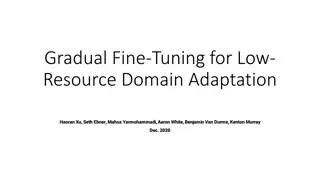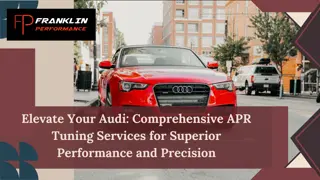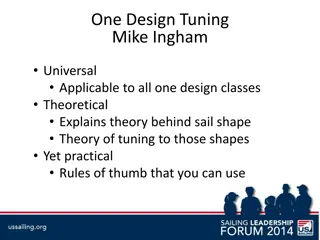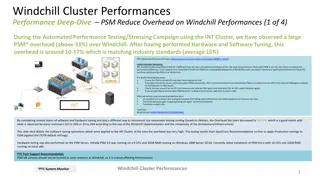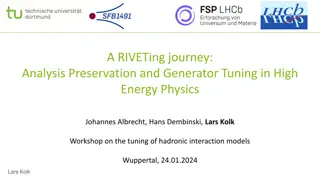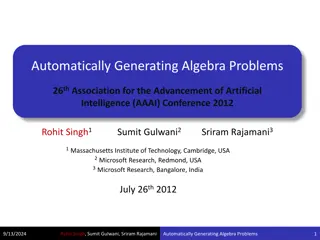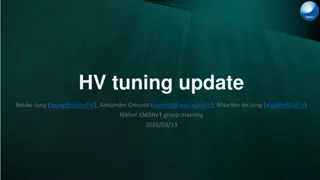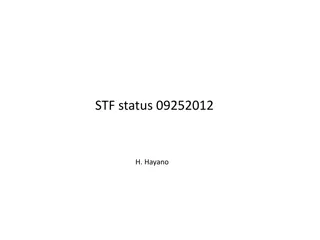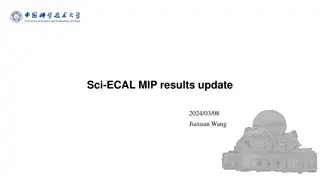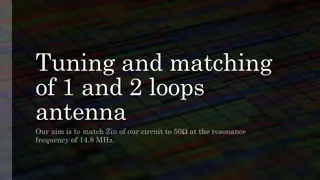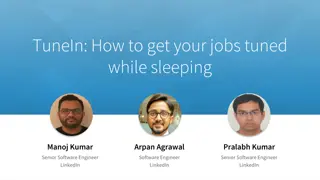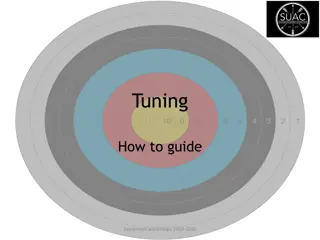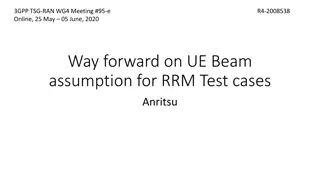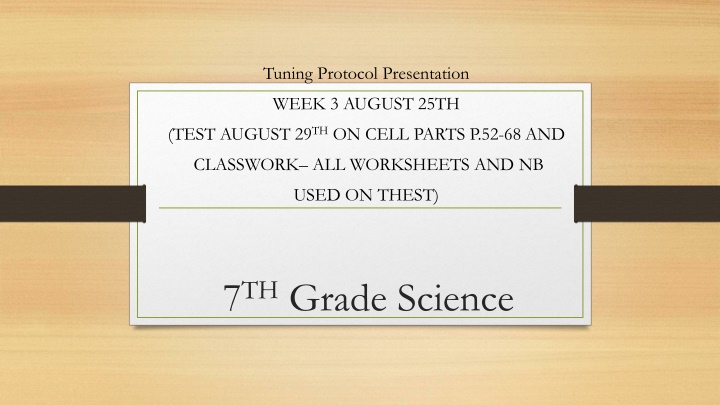
Interactive Learning on Cell Structures and Functions in 7th Grade Science
Dive into the world of cell structures and functions with this interactive learning session for 7th-grade students. Explore how cells, tissues, organs, and systems work together to meet the basic needs of organisms, and engage in activities like test practice, making 3D cell models, and using online resources for a comprehensive understanding. Stay updated on assessments, rubrics, and focus questions for continuous student progress.
Download Presentation

Please find below an Image/Link to download the presentation.
The content on the website is provided AS IS for your information and personal use only. It may not be sold, licensed, or shared on other websites without obtaining consent from the author. If you encounter any issues during the download, it is possible that the publisher has removed the file from their server.
You are allowed to download the files provided on this website for personal or commercial use, subject to the condition that they are used lawfully. All files are the property of their respective owners.
The content on the website is provided AS IS for your information and personal use only. It may not be sold, licensed, or shared on other websites without obtaining consent from the author.
E N D
Presentation Transcript
Tuning Protocol Presentation WEEK 3 AUGUST 25TH (TEST AUGUST 29THON CELL PARTS P.52-68 AND CLASSWORK ALL WORKSHEETS AND NB USED ON THEST) 7THGrade Science
STANDARDS AND LEARNING GOALS GA: Grade 7 Life Science GA: Grade 7 Life Science S7L2. Obtain, evaluate, and communicate information to describe how cell structures, cells, tissues, organs, and organ systems interact to maintain the basic needs of organisms. a. Develop a model and construct an explanation of how cell structures (specifically the nucleus, cytoplasm, cell membrane, cell wall, chloroplasts, lysosome, and mitochondria) contribute to the function of the cell as a system in obtaining nutrients in order to grow, reproduce, make needed materials, and process waste. Show details b. Develop and use a conceptual model of how cells are organized into tissues, tissues into organs, organs into systems, and systems into organisms.
INSTRUCTIONAL ACTIVITIES- (WORK SESSION) Test practice page 52 thru 58. Have cell pictures in Notebook. Animal and Plant. -STUDENT notebook notes daily. Microscope notes from class including picture. - PRACTICE WORKSHEETS using cell parts, cell functions and microscope for test. Also review cell theory. ART WORK MAKE AND PAINT 3D PICTURE OF 3 CELLS. - ONLINE RESOURCES -Discover Education, PBS, and Science on Prime
STUDENT WORK Unit : Cell structures and functions S7L2a I can identify and define the internal structures of a cell. I can differentiate between a plant and animal cell. I can identify the function of cellular organelles. I can compare and contrast cell structures. I can predict what would happen if a cell did not contain a given structure. I can develop a model of a cell structure S7L2b I can explain the levels of organization for living organisms THE USE OF CELL PHONES TO PLAY GAMES, READ TEXT MESSAGES, AND ANY OTHER PERSONAL USE IS A VIOLATION OF RCBOE APPROVED USE POLICY. PARENTS PLEASE CHECK YOUR CHILDS HISTORY OF USE ON THE CELLPHONE TO SEE WHEN IT IS BEING USED. THIS BEHAVIOR IS CAUSING STUDENTS TO MISS LESSONS AND MAY RESULT IN FAILING GRADES.
ASSESSMENTS/RUBRICS 1. Pre and Post quiz results on lessons. 2. Evaluation of VOCABULARY worksheets in class. 3. Daily progress and mastery checks (some will be graded but students will be allowed to use all notes and handouts) 4. Homework (checked in class for effort- 10% of final grade)
FOCUS QUESTIONS FOR THIS NEXT WEEK 1. What evidence will be collected to document student learning 2. COMPLETION OF WORKBOOK IN CLASS AND HW 3.. What are the opportunities to increase learning?- ----------KAHOOT - ----------
Science Learning Expectations 3 Part Lesson 5 E Component Opening Engage Purpose: Establish Relevancy Help learner determine need of new concepts Generate Interest Assess prior knowledge/Connect to past knowledge Ask questions/Responses demonstrate entry point of understanding Whole group Work Period Explore Purpose: Present Content Help learner understand concepts, process/procedures, facts or principles Discover new skills Probe, inquire, and question experiences Examine their thinking/Shares ideas and suspends judgment Establish relationships and understanding Individual or Small Group Individual, Small Group or Whole Group What this Looks Like Grouping Experience key concepts
Explain Purpose: Improve Understanding Help learner to express new learning and provide guidance new discoveries Communicate new understandings Connect informal language to formal language(provides definitions, new words, and explanations) Clarify understanding Whole Group Extend/Elaborate Purpose: Construct New Learning Help learner apply prior learning and acquire new Apply new learning to a new or similar situation Use terms and definitions previously acquired Uses previous information to probe, ask questions, and make reasonable judgments Individual, Small Group or Whole Group Closing Evaluate Purpose: Assess Learning Help learner measure learning against learning goals observation or open ended response Provides reasonable responses and explanations to events or phenomena Connect prior knowledge and background to Demonstrate understanding of new concept by


